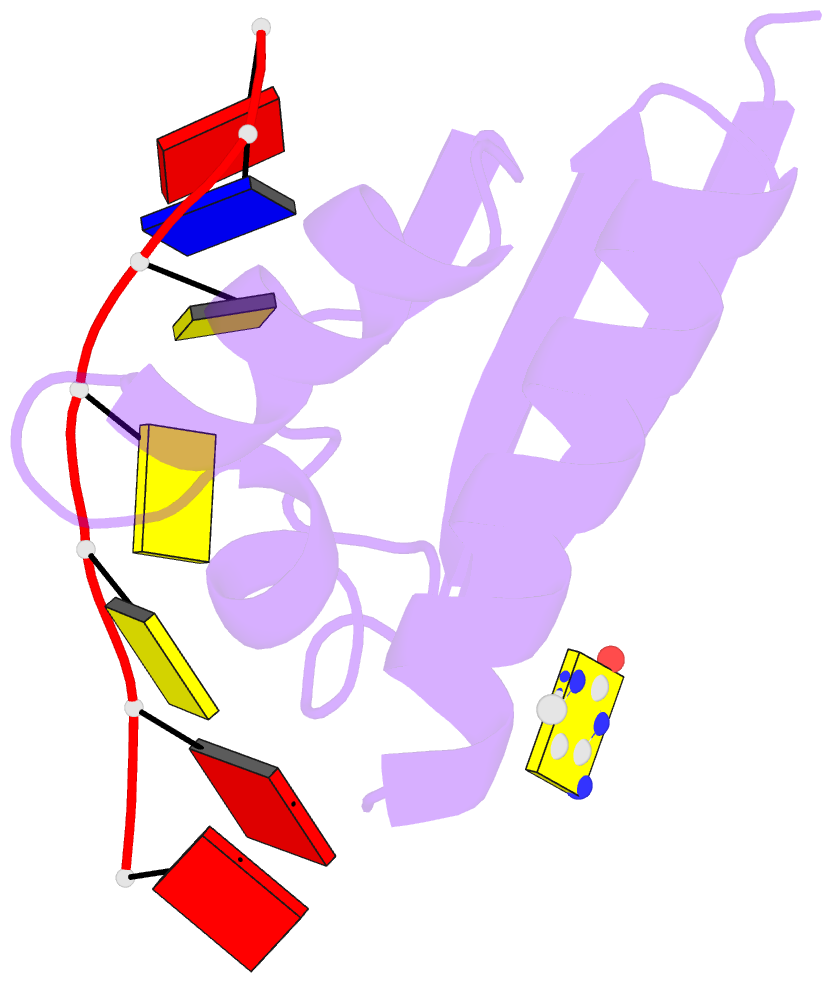Summary information and primary citation
- PDB-id
- 2p2r; SNAP-derived features in text and JSON formats;
DNAproDB
- Class
- RNA and DNA binding protein-DNA
- Method
- X-ray (1.6 Å)
- Summary
- Crystal structure of the third kh domain of human poly(c)-binding protein-2 in complex with c-rich strand of human telomeric DNA
- Reference
- Fenn S, Du Z, Lee JK, Tjhen R, Stroud RM, James TL (2007): "Crystal structure of the third KH domain of human poly(C)-binding protein-2 in complex with a C-rich strand of human telomeric DNA at 1.6 A resolution." Nucleic Acids Res., 35, 2651-2660. doi: 10.1093/nar/gkm139.
- Abstract
- KH (hnRNP K homology) domains, consisting of approximately 70 amino acid residues, are present in a variety of nucleic-acid-binding proteins. Among these are poly(C)-binding proteins (PCBPs), which are important regulators of mRNA stability and posttranscriptional regulation in general. All PCBPs contain three different KH domains and recognize poly(C)-sequences with high affinity and specificity. To reveal the molecular basis of poly(C)-sequence recognition, we have determined the crystal structure, at 1.6 A resolution, of PCBP2 KH3 domain in complex with a 7-nt DNA sequence (5'-AACCCTA-3') corresponding to one repeat of the C-rich strand of human telomeric DNA. The domain assumes a type-I KH fold in a betaalphaalphabetabetaalpha configuration. The protein-DNA interface could be studied in unprecedented detail and is made up of a series of direct and water-mediated hydrogen bonds between the protein and the DNA, revealing an especially dense network involving several structural water molecules for the last 2 nt in the core recognition sequence. Unlike published KH domain structures, the protein crystallizes without protein-protein contacts, yielding new insights into the dimerization properties of different KH domains. A nucleotide platform, an interesting feature found in some RNA molecules, was identified, evidently for the first time in DNA.





